Online Employee Onboarding
Employee onboarding process provides personalized training, easy access to resources, and efficient task management—all in one place. Boost employee engagement, accelerate time-to-productivity, and elevate your employer brand.
What is employee onboarding?
Employee onboarding is the process by which new employees are integrated into an organization and provided with the necessary tools, information, and resources to become productive members of the team.
It typically begins when a new hire accepts an offer from the company and continues through their first few weeks or months on the job.
The purpose of employee onboarding is to help new employees adjust to their roles, understand the company culture, and build relationships with their colleagues.
It involves various activities such as orientation sessions, training programs, introductions to key team members, providing access to necessary systems and resources, and setting clear expectations for performance and behavior.
What are the key components of an employee onboarding tool?
Employee onboarding tools typically encompass a range of features and functionalities aimed at streamlining the onboarding process and enhancing the experience for both new hires and the organization.
Some key components of an employee onboarding service tool include:
- Onboarding Workflow Management: A centralized platform to manage the entire onboarding process, including task assignment, tracking progress, and setting deadlines for various onboarding activities.
- Digital Forms and Documentation: Capability to create, distribute, and collect digital forms such as tax forms, NDAs, employee handbooks, and other required documentation electronically.
- Training and Learning Management: Integration with learning management systems (LMS) or providing built-in modules for delivering training materials, courses, and resources to help new hires acquire the necessary skills and knowledge for their roles.
- Employee Information Management: Secure storage and management of employee information, including personal details, emergency contacts, and employment documents.
- Compliance and Policy Acknowledgment: Tools to ensure that new hires acknowledge company policies, code of conduct, compliance regulations, and other legal requirements.
- Task Automation and Reminders: Automated notifications and reminders for both HR personnel and new hires about pending tasks, upcoming deadlines, and required actions throughout the onboarding process.
- Integration with HR Systems: Seamless integration with other HR systems such as payroll, performance management, and applicant tracking systems to ensure data consistency and streamline administrative processes.
- Employee Self-Service Portal: A portal where new hires can access relevant information, complete tasks, track their progress, and find answers to common questions without direct assistance from HR personnel.
- Feedback and Surveys: Tools to gather feedback from new hires about their onboarding experience, as well as surveys to assess the effectiveness of the onboarding program and identify areas for improvement.
- Analytics and Reporting: Reporting capabilities to track key metrics related to onboarding, such as time-to-productivity, completion rates, and overall satisfaction levels, to evaluate the success of the onboarding program and make data-driven decisions for enhancements.
These components collectively contribute to a comprehensive employee onboarding tool that helps organizations efficiently onboard new hires, ensure compliance, and foster a positive experience for employees as they join the company.
Why good employee onboarding tool is important?
A good employee onboarding tool is important for several reasons:
- Enhanced Efficiency: It streamlines the onboarding process, automates repetitive tasks, and reduces administrative burden for HR personnel, allowing them to focus on more strategic activities.
- Improved Employee Experience: A well-structured onboarding program facilitated by a good tool helps new hires feel welcomed, informed, and supported from day one, leading to higher levels of job satisfaction and engagement.
- Faster Time-to-Productivity: By providing access to training materials, resources, and necessary information upfront, onboarding tools enable new employees to ramp up quickly and start contributing to the organization’s goals sooner.
- Consistency and Compliance: Standardized onboarding processes and automated compliance checks ensure that all new hires receive consistent information, complete required tasks, and acknowledge company policies, reducing the risk of compliance issues.
- Reduced Turnover: Effective onboarding programs supported by a good tool can help improve employee retention by fostering a positive first impression, promoting a sense of belonging, and setting clear expectations for success within the organization.
- Data-Driven Insights: Onboarding tools that offer analytics and reporting capabilities enable HR teams to track key metrics, identify bottlenecks or areas for improvement in the onboarding process, and make informed decisions to optimize the program over time.
- Enhanced Employer Branding: A smooth and well-executed onboarding experience reflects positively on the employer brand, helping attract top talent and retain employees who are more likely to become brand ambassadors.
- Adaptability and Scalability: As organizations grow or change, a good onboarding tool can adapt to evolving needs, accommodate larger volumes of new hires, and support the expansion into new locations or markets without sacrificing quality or efficiency.
Investing in a good employee onboarding tool not only benefits new hires by facilitating a seamless transition into the organization but also yields long-term advantages for the company in terms of productivity, retention, compliance, and employer reputation.
Benefits of using Online Employee Onboarding
Using online employee onboarding offers several benefits for both organizations and new hires. Some of the key advantages include:
Increased Efficiency: Online employee onboarding streamlines the process by digitizing paperwork, automating tasks, and providing centralized access to all necessary information and resources. This saves time for HR personnel and new hires, allowing them to focus on more meaningful aspects of the onboarding experience.
Improved Employee Experience: SharePoint employee onboarding software provides a smoother and more engaging experience for new hires, offering interactive training modules, personalized welcome messages, and self-service portals where they can access information, complete tasks, and ask questions conveniently.
Faster Time-to-Productivity: By providing access to training materials, resources, and information upfront, online onboarding helps new hires acclimate to their roles more quickly, reducing the time it takes for them to become fully productive contributors to the organization.
Enhanced Compliance: Online onboarding tools can ensure that new hires complete required forms, acknowledge company policies, and comply with legal regulations consistently and accurately. Automated reminders and tracking features help enforce compliance and reduce the risk of errors or oversights.
Cost Savings: Online employee onboarding eliminates the need for printing, shipping, and storing paper documents, as well as manual data entry and administrative tasks associated with traditional onboarding processes. This leads to cost savings in terms of materials, time, and labor.
Scalability and Flexibility: Employee onboarding app can easily scale to accommodate a growing workforce or changes in organizational needs. They offer flexibility to tailor onboarding processes, content, and workflows to suit different roles, departments, or locations within the organization.
Data-Driven Insights: Online onboarding tools provide analytics and reporting capabilities that allow HR teams to track key metrics, measure the effectiveness of the onboarding program, identify areas for improvement, and make data-driven decisions to optimize the process over time.
Remote Accessibility: With the rise of remote work and distributed teams, Microsoft employee onboarding software enables organizations to onboard new hires regardless of their location. This facilitates seamless collaboration and ensures that remote employees receive the same level of support and information as their onsite counterparts.
Consistency and Standardization: Online onboarding ensures consistency and standardization across all new hires, regardless of who conducts the onboarding process or where they are located. This promotes a unified experience and helps reinforce company culture, values, and expectations.
Positive Employer Branding: A smooth and efficient online onboarding experience reflects positively on the employer brand, leaving a lasting impression on new hires and contributing to their overall satisfaction and engagement with the organization.
Leveraging online employee onboarding offers numerous benefits that can help organizations streamline processes, improve employee experiences, and drive better outcomes for both the organization and its employees.
How to Choose the Best Online Employee Onboarding Tool?
Choosing the best online employee onboarding tool requires careful consideration of various factors to ensure that it aligns with your organization’s needs, goals, and budget. Here are some steps to help you select the right tool:
Define Your Requirements: Start by identifying your organization’s specific onboarding needs and objectives. Consider factors such as the size of your workforce, the complexity of your onboarding process, desired features, integration requirements, and budget constraints.
Research Available Options: Conduct thorough research to explore the different employee onboarding tools available in the market. Look for tools that have positive reviews, high ratings, and a track record of success. Consider both well-established providers and newer solutions that may offer innovative features.
Evaluate Features and Functionality: Make a list of must-have features based on your requirements and evaluate each tool’s functionality against these criteria. Key features to consider include onboarding workflow management, digital forms and documentation, training and learning management, employee information management, compliance capabilities, task automation, integration options, and reporting capabilities.
Assess User Experience: Consider the ease of use and intuitiveness of the onboarding tool’s interface from both the HR administrator’s and new hire’s perspectives. A user-friendly interface can contribute to a positive onboarding experience and reduce the learning curve for both parties.
Check Integration Capabilities: Determine whether the onboarding tool integrates seamlessly with your existing HR systems, such as payroll, applicant tracking, performance management, and learning management systems. Integration capabilities can streamline data exchange, ensure data consistency, and enhance overall efficiency.
Consider Customization Options: Evaluate the level of customization and flexibility offered by the onboarding tool. Choose a tool that allows you to tailor the onboarding process, forms, templates, and workflows to suit your organization’s unique requirements and branding.
Review Security and Compliance Features: Prioritize security and compliance considerations when evaluating onboarding tools. Ensure that the tool complies with relevant data protection regulations, offers robust security measures to safeguard sensitive employee information, and supports compliance with legal requirements and industry standards.
Request Demos and Trials: Take advantage of free trials or request demos from shortlisted vendors to get hands-on experience with the onboarding tool. This allows you to assess its usability, functionality, and suitability for your organization before making a final decision.
Consider Scalability and Support: Choose an onboarding tool that can scale with your organization’s growth and evolving needs. Additionally, assess the vendor’s support services, including customer support availability, responsiveness, and expertise, to ensure ongoing assistance and maintenance.
Evaluate Cost and ROI: Finally, consider the cost of the onboarding tool, including setup fees, subscription costs, and any additional charges for customization or integration. Evaluate the potential return on investment (ROI) based on the tool’s ability to improve efficiency, productivity, employee satisfaction, and retention.
By following these steps and conducting a thorough evaluation process, you can choose the best online employee onboarding tool that meets your organization’s requirements and helps streamline the onboarding process effectively.
Conclusion
In conclusion, online employee onboarding is a crucial process for integrating new hires into an organization efficiently and effectively. By leveraging digital tools and resources, companies can streamline the onboarding process, ensuring that new employees are well-prepared, engaged, and aligned with the company’s goals and culture from day one.
This approach not only enhances the overall onboarding experience but also contributes to higher retention rates and improved productivity. For a comprehensive and seamless onboarding experience, consider using Employee Onboarding 365 to facilitate a smooth transition for your new team members.
Frequently Asked Questions
Onboarding software benefits multiple stakeholders within an organization:
HR Personnel: Onboarding software streamlines administrative tasks, automates processes, and centralizes information, reducing the workload for HR personnel. It allows HR teams to efficiently manage onboarding tasks, track progress, and ensure compliance with less manual effort.
New Hires: Onboarding software provides new hires with a smoother and more engaging experience. It offers access to necessary information, training materials, and resources, helping them acclimate to their roles and the organization more quickly. Additionally, it reduces paperwork and administrative hassles, allowing new hires to focus on building relationships and getting up to speed in their new positions.
Managers and Team Leaders: Onboarding software facilitates communication between managers and new hires, enabling them to set expectations, provide feedback, and track progress effectively. It helps managers ensure that new employees receive the support and guidance they need to succeed in their roles.
Compliance Officers: Onboarding software helps ensure compliance with legal and regulatory requirements by providing features such as electronic document signing, automated compliance checks, and audit trails. It reduces the risk of errors or oversights related to compliance, helping organizations avoid potential penalties or legal issues.
Organizational Leadership: Onboarding software contributes to organizational success by improving employee retention, productivity, and satisfaction. It helps organizations build a positive employer brand, attract top talent, and achieve their business goals more effectively.
Onboarding software benefits various stakeholders by streamlining processes, enhancing the employee experience, and driving better outcomes for the organization as a whole.
Yes, employee onboarding software can certainly be used for remote onboarding. In fact, it’s particularly well-suited for remote onboarding scenarios where new hires may not have physical access to the workplace or HR personnel.
Onboarding an employee involves several key steps to ensure a smooth transition into their new role and the organization. Here is a general outline of the steps for onboarding an employee:
Preparation Before the Employee’s Start Date:
- Notify relevant departments and team members about the new hire’s start date.
- Prepare the employee’s workspace, equipment, and necessary tools.
- Set up accounts and access to company systems, email, and communication tools.
- Gather necessary paperwork and documentation for the onboarding process.
Welcome and Orientation:
- Greet the new employee warmly upon arrival and introduce them to their manager and team members.
- Provide a tour of the workplace, including key areas such as restrooms, break rooms, and emergency exits.
- Conduct an orientation session to familiarize the employee with company policies, culture, values, and expectations.
- Review the employee handbook and answer any questions they may have.
Administrative Tasks and Paperwork:
- Complete necessary paperwork, such as employment contracts, tax forms, and benefits enrollment documents.
- Ensure that the employee’s personal information, emergency contacts, and payroll details are accurately recorded.
- Provide information about company benefits, including health insurance, retirement plans, and other perks.
Training and Development:
- Provide training on job-specific tasks, responsibilities, and procedures.
- Offer access to training materials, online courses, and resources to support the employee’s professional development.
- Schedule meetings with relevant stakeholders to discuss the employee’s role, goals, and performance expectations.
Integration and Relationship Building:
- Facilitate introductions to key colleagues, mentors, and stakeholders across the organization.
- Encourage team bonding activities, such as team lunches or social events, to help the employee feel welcomed and included.
- Foster a supportive environment where the employee feels comfortable asking questions and seeking assistance as needed.
Feedback and Check-Ins:
- Schedule regular check-ins with the employee to provide feedback, address any concerns, and assess their progress.
- Encourage open communication and constructive feedback from both the employee and their manager.
- Monitor the employee’s onboarding progress and make adjustments as necessary to ensure a successful transition.
Follow-Up and Ongoing Support:
- Follow up with the employee after their first week, month, and quarter to gather feedback and address any issues or challenges.
- Provide ongoing support and resources to help the employee succeed in their role.
- Continue to invest in the employee’s professional development and growth within the organization.
By following these steps, organizations can effectively onboard employees and set them up for success in their new roles.
Schedule a free personalized 1:1 demo
By proceeding, you accept Cubic Logics’s terms and conditions and privacy policy






Start Your Free Experience
By proceeding, you accept Cubic Logics’s terms and conditions and privacy policy






Schedule a free personalized 1:1 demo
By proceeding, you accept Cubic Logics’s terms and conditions and privacy policy






Try It Free, No Obligation
By proceeding, you accept Cubic Logics’s terms and conditions and privacy policy






Request of the Free License
By proceeding, you accept Cubic Logics Terms and Conditions and Privacy Policy
Offer is expiring soon!
Fill in your details below to receive your personalized coupon code.
Start Your Free Experience
By proceeding, you accept Cubic Logics’s terms and conditions and privacy policy






